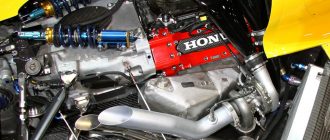What’s the Engine Size of My Car?
Introduction
The engine size of your car is an important piece of information to know. It can affect things like your car’s performance, fuel economy, and emissions. In this guide, we’ll explain what engine size is, how to find it, and what it means for your car.
What is Engine Size?
Engine size is a measure of the displacement of an engine’s cylinders. Displacement is the volume of air and fuel that the engine can move in one cycle. It is measured in cubic centimeters (cc) or liters (L).
Larger engines have more displacement, which means they can move more air and fuel. This results in more power and torque. However, larger engines also tend to be less fuel-efficient and produce more emissions.
How to Find the Engine Size of Your Car
There are a few different ways to find the engine size of your car:
- Check your owner’s manual. The engine size will be listed in the specifications section.
- Look under the hood. The engine size may be stamped on a metal plate on the engine.
- Use an online VIN decoder. A VIN decoder can provide you with a variety of information about your car, including the engine size.
What Does Engine Size Mean for Your Car?
The engine size of your car can affect the following:
- Performance. Larger engines have more power and torque, which can improve acceleration and top speed.
- Fuel economy. Larger engines tend to be less fuel-efficient than smaller engines.
- Emissions. Larger engines produce more emissions than smaller engines.
Conclusion
The engine size of your car is an important piece of information to know. It can affect things like your car’s performance, fuel economy, and emissions. By understanding what engine size is and how to find it, you can make informed decisions about your car.




